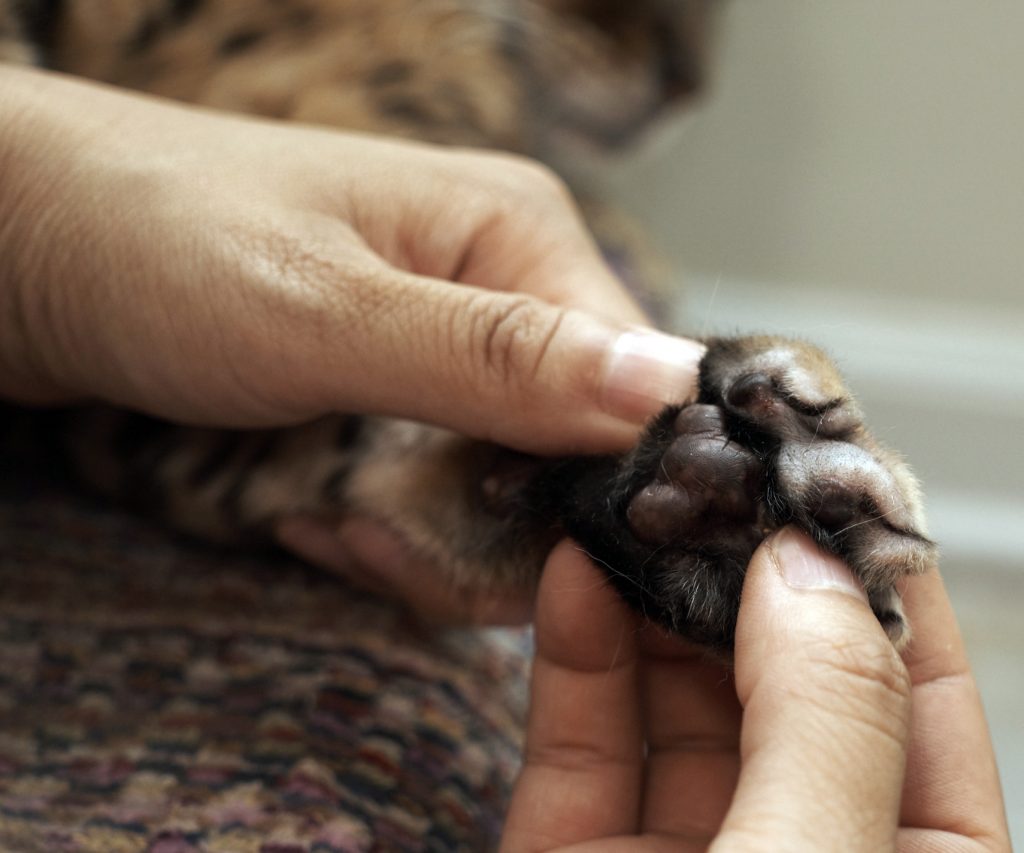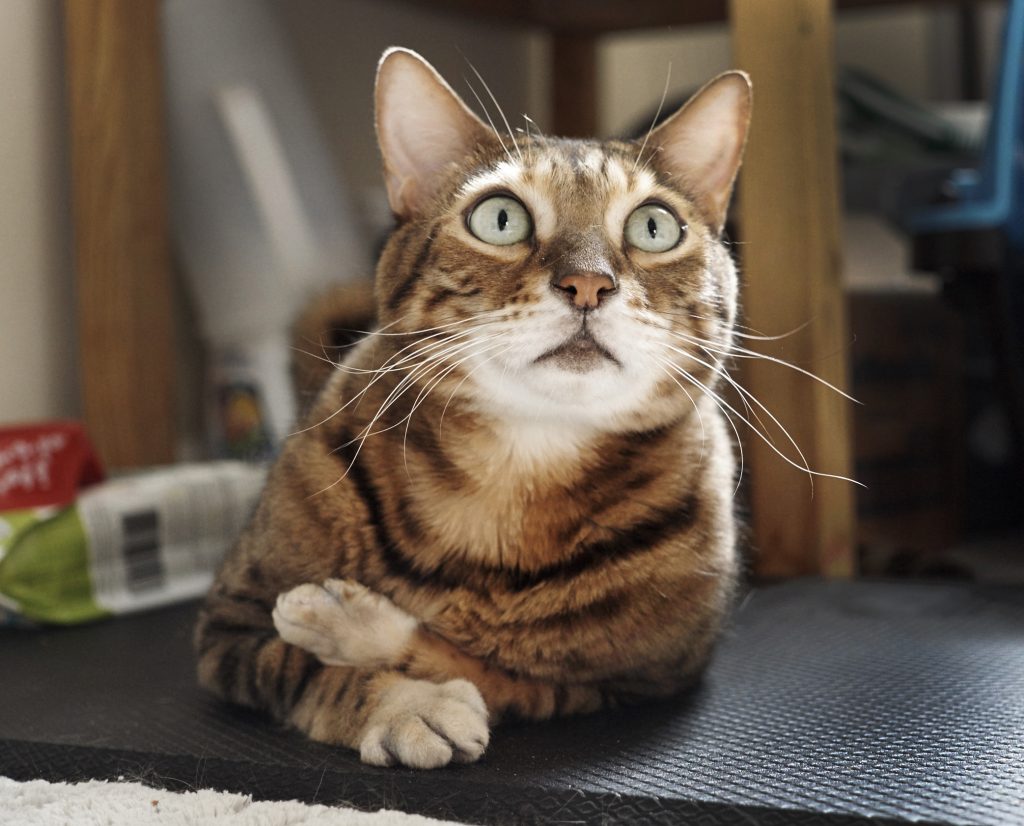
The Little Leopard
Ozmin is a Bengal cat who had over 50% of his toe pads cut out of his front feet during a botched declaw operation. Afterwards, the vet noted that he was not using his front feet, not even after over four months of daily pain medication. The declaw surgery had left Ozmin crippled, and he was constantly shaking his paws, licking them profusely after any amount of walking or standing, and curling and “hooking” his paws in an attempt to relieve the inescapable pain and discomfort. Most of the time he kept to himself in his cage at the shelter, lying down so he could stay off his feet.
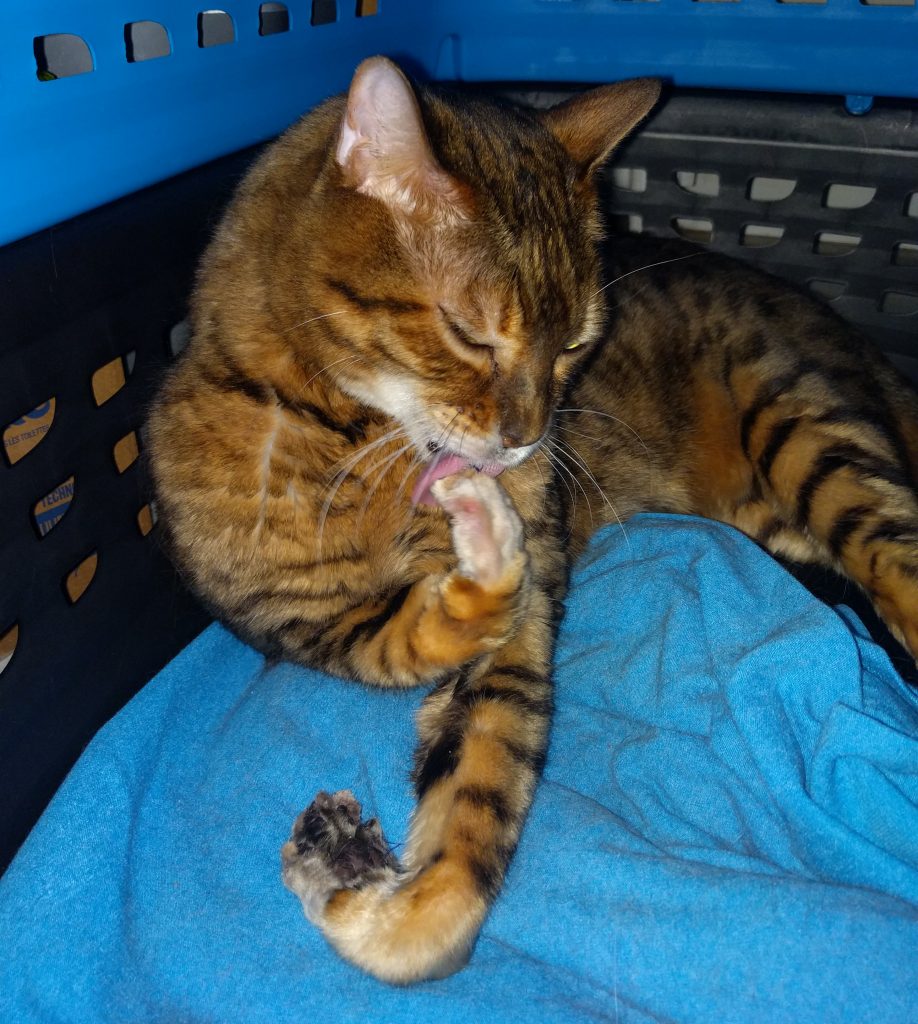
Ozmin had been turned in to the shelter at 7 years of age by his original owners after they declawed him and he had started urinating outside his litterbox and exhibiting other, new behavior problems. The shelter informed the surrendering owners that Ozmin’s refusal to use the litterbox was due to the pain from his botched declaw job, which had mutilated his paws and made it painful for him to dig in and drag his raw, tender paws through hard litter. The shelter also explained that his change in personality was due to the way cats react to pain by hiding and becoming withdrawn and defensive. Declawed cats also tend to bite people more often, because they have lost their first line of defense (their claws) and because giving “warning pats” with their paws has suddenly become painful. Irregardless, his original owners did not want him or his new problems anymore, and so Ozmin was turned in to the shelter, where he stayed for the next 8 months in his cage, with some free-roam time which he rarely used because his feet hurt.
At one point, another family adopted Ozmin, but they soon returned him to the shelter again after he started urinating outside the litterbox. Repeat-returns is not unusual for declawed cats who acquire post-declaw behavior problems that make them unadoptable.
Throughout this whole ordeal, Ozmin remained friendly, enjoying head pats and voicing very loud meows to shelter staff and volunteers, where he became a favorite as he waited and waited.
One day, a woman noticed Ozmin crouched in his cage. She read the notes on his cage door and knew that his suffering was misunderstood. She consulted with her cat rescue contacts but none were able to commit to him, so she adopted him herself, with the plan of somehow raising the money for a declaw salvage surgery so that Ozmin could get his life back.
“He was suffering way more than people realized and he needed more medical care than the shelter could afford,” said his new mom. “But the thing that kept me up at night was this: even though his story is sad, his life and his suffering would be a tragic waste if no one knew about it and no one learned from it.” After various efforts mobilizing whomever she could, she was able to get him xrays and a generous surgeon made the declaw salvage surgery possible.
Ozmin trying to walk
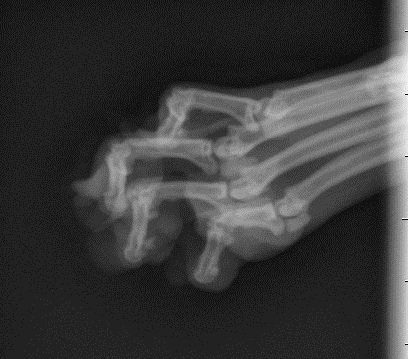 Ozmin’s X ray
Ozmin’s X ray
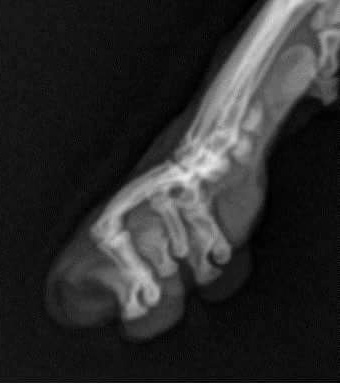 Normal paw that isn’t declawed
Normal paw that isn’t declawed
Under sedation, the vet could feel the bone fragments in Ozmin’s paws that made it painful for him to bear weight. The typical declaw amputates the P3 bone at the knuckle. Xrays revealed that not only had Ozmin’s P3 bones been removed, but there was also substantial damage to all of his P2 bones. To make matters worse, a significant portion of the soft tissue in his paws had also been removed along with over half of his toe pads during the declaw surgery, which forced him to stand and walk on the pointy ends of his broken P2 bones with inadequate soft tissue or padding to cover them.
Two separate vets — one with over 30 years of experience as a veterinary surgeon — both commented that this was the worst mutilation of a cat’s front feet that they had ever seen.
His mom also noted that Ozmin’s left leg was crooked and the musculature felt significantly uneven, the likely result of complications from the tourniquet used by the declaw vet to stop the bleeding.
Ozmin was dragging his front left paw on the floor because of nerve damage and he couldn’t feel his paw. At mealtime, when he had to crouch down, he would “knuckle over” and “stand” on his “wrist”. The vet worried that this pressure would damage his forearm bone and joint because his “wrist” was never intended for standing on, so I had to hold up the left side of his body and act like his front left leg for him.
Ozmin holding up his paw eating
Saving Ozmin’s Paws, Finally
The surgeons determined that the best corrective action would be to remove all his P2 bones, instead of operating on each damaged P2 bone individually, which would have been more traumatic. While vets do occasionally remove entire, individual toes from dogs and cats (usually in cancer cases), it is highly unusual to remove all toes from an animal’s two front feet. The surgeons believed that this drastic action would give Ozmin the best chance of walking normally again, but its rareness left them unsure of what to expect of Ozmin’s recovery. By the end of the salvage surgery, Ozmin had another 10 bones removed from his front feet, making a total of 20 bones amputated across 2 surgeries. Immediately afterwards, Ozmin experienced increased bleeding and was dragging his left paw on the ground, so he remained at the hospital for extended observation and additional laserwork. Back home, he continued to walk gingerly on three legs and drag his left paw but the vets predicted that any new nerve damage would have a good chance of recovery in time.
Currently Ozmin is recovering slowly but surely from his surgery, baking a lot of cat loafs on the soft floor mats in the bathroom and waiting for the day that he can walk normally again. He may never be able to jump, run, and climb again but people around the world are praying for Ozmin’s full recovery … so who knows, maybe it will be possible!
